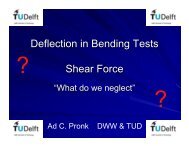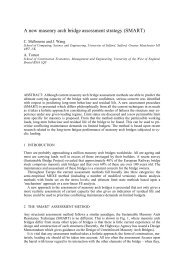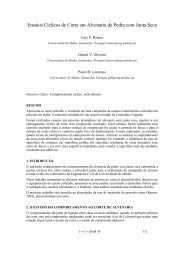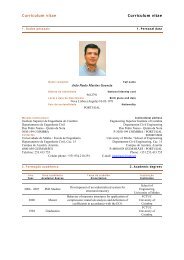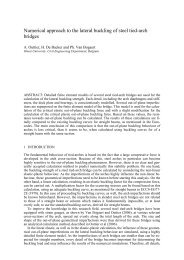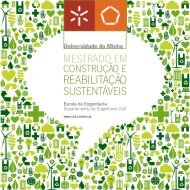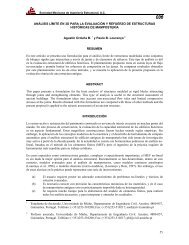Sustainable Construction A Life Cycle Approach in Engineering
Sustainable Construction A Life Cycle Approach in Engineering
Sustainable Construction A Life Cycle Approach in Engineering
Create successful ePaper yourself
Turn your PDF publications into a flip-book with our unique Google optimized e-Paper software.
This paper outl<strong>in</strong>es a research project currently be<strong>in</strong>g undertaken by the author to develop a better<br />
understand<strong>in</strong>g of the requirements of the designer and the end user. The project aims to achieve<br />
the follow<strong>in</strong>g;<br />
• An understand<strong>in</strong>g of current perceptions, awareness and behaviours of the hous<strong>in</strong>g design<br />
team;<br />
• An understand<strong>in</strong>g of current perceptions, awareness and behaviours of ‘end users’;<br />
• An understand<strong>in</strong>g of expected adaptations required for design team members’ to achieve<br />
low and zero carbon hous<strong>in</strong>g;<br />
• An understand<strong>in</strong>g of expected adaptations required for end users’ to live <strong>in</strong> Code four or<br />
above; and<br />
• A rigorous approach to achiev<strong>in</strong>g zero carbon hous<strong>in</strong>g which can be rolled out across all<br />
new hous<strong>in</strong>g <strong>in</strong> the UK by br<strong>in</strong>g<strong>in</strong>g together <strong>in</strong>formation from designers and end users.<br />
The first stage of the research will focus on social hous<strong>in</strong>g <strong>in</strong> regards to designers and end users.<br />
The next stage will be to look at private hous<strong>in</strong>g <strong>in</strong>clud<strong>in</strong>g designers, developers and potential<br />
purchasers.<br />
2 METHODOLOGY<br />
2.1 Introduction<br />
The researchers have developed a 3 stage research methodology. The first stage <strong>in</strong>volves<br />
collect<strong>in</strong>g <strong>in</strong>formation about current perceptions, awareness and behaviours from designers and<br />
end users’ us<strong>in</strong>g semi structured <strong>in</strong>terview driven questionnaires. The second stage will <strong>in</strong>volve<br />
separate focus groups with designers and end users’. A dissem<strong>in</strong>ation workshop will be used to<br />
br<strong>in</strong>g together both groups to discuss the f<strong>in</strong>al outcome and the way forward. Once this<br />
<strong>in</strong>formation is collected the project aims to study behaviours with<strong>in</strong> specific low and zero carbon<br />
case studies. (McCullough et al., 2010)<br />
2.2 Design Team Interviews<br />
As part of the first stage of the research project semi-structured <strong>in</strong>terviews will be conducted with<br />
design team representatives. 12 participants were recommended by a local hous<strong>in</strong>g executive.<br />
This will serve as a pilot for a fuller research project. The <strong>in</strong>terviews will be organised <strong>in</strong> the<br />
follow<strong>in</strong>g three sections:<br />
Scene sett<strong>in</strong>g: This section uses mostly structured questions to gather <strong>in</strong>formation about<br />
the participants’ professional background, experience, current job and experience with<strong>in</strong><br />
the susta<strong>in</strong>able hous<strong>in</strong>g <strong>in</strong>dustry and then develop an understand<strong>in</strong>g of participants’<br />
perceptions of the climate change issue with<strong>in</strong> the hous<strong>in</strong>g <strong>in</strong>dustry us<strong>in</strong>g rat<strong>in</strong>g scales<br />
similar to those used <strong>in</strong> the end user questionnaire. Further questions <strong>in</strong>vestigate<br />
participants’ perceptions of the proportion of energy used <strong>in</strong> construction and <strong>in</strong> the home<br />
<strong>in</strong> comparison with other sources of carbon emissions;<br />
<strong>Susta<strong>in</strong>able</strong> <strong>Construction</strong>: Questions aim to develop an understand<strong>in</strong>g of the participants’<br />
knowledge <strong>in</strong> regards to susta<strong>in</strong>able construction, energy generation and recent<br />
developments with<strong>in</strong> the area such as Passivhaus, Allowable Solutions and <strong>in</strong>ternational<br />
ideas. Barriers to change, drivers of the design process and experience of the skills gap<br />
are also identified. Clos<strong>in</strong>g questions are aimed at draw<strong>in</strong>g out <strong>in</strong>formation <strong>in</strong> regards to<br />
the importance of susta<strong>in</strong>ability with<strong>in</strong> the design process and <strong>in</strong>vestigat<strong>in</strong>g the<br />
participants’ knowledge and views about specific strategies;<br />
101


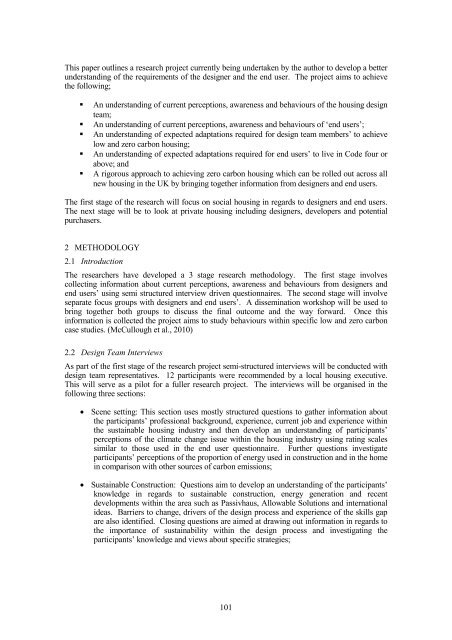
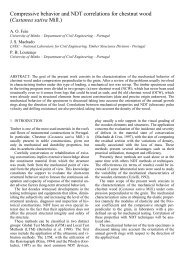
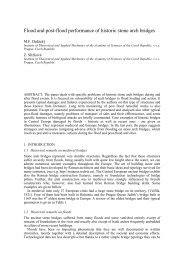
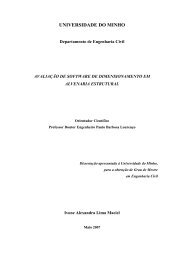
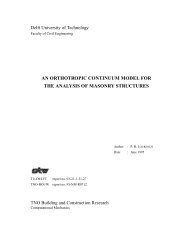

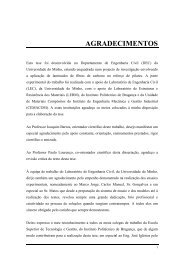

![Weibull [Compatibility Mode]](https://img.yumpu.com/48296360/1/190x134/weibull-compatibility-mode.jpg?quality=85)
